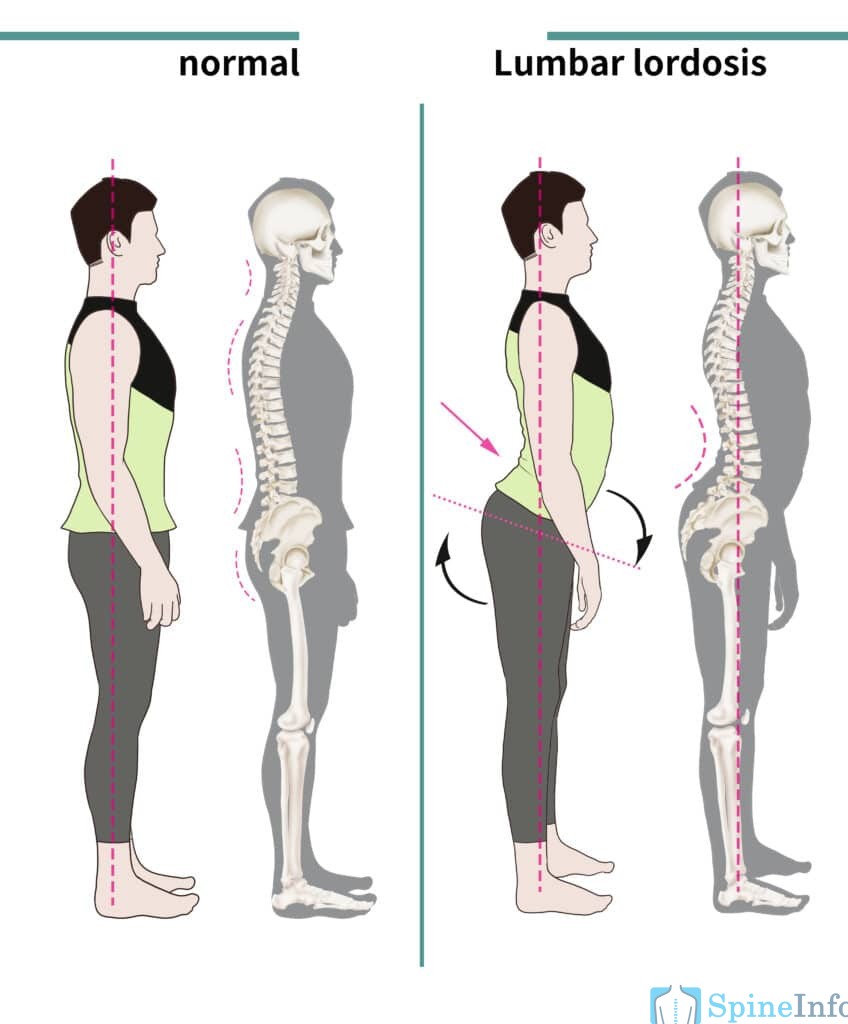Lordosis, a common spinal condition characterized by an excessive inward curve of the lower back, can lead to discomfort and pain. However, the good news is that targeted exercises can play a significant role in managing lordosis and promoting a healthier spine. In this article, we will explore a range of strengthening and stretching techniques designed to alleviate lordotic pain and improve overall spinal health.
Understanding Lordosis and its Effects
Before diving into exercises, let’s briefly understand what lordosis is and how it affects the spine. Lordosis occurs when the natural curve of the spine, particularly in the lower back, becomes exaggerated. This can lead to muscle imbalances, postural issues, and even discomfort. Strengthening and stretching exercises are crucial for restoring muscle balance, enhancing flexibility, and alleviating the strain caused by lordosis.

Strengthening Exercises
Pelvic Tilts
Lie on your back with knees bent. Gently press your lower back into the floor, engaging your core muscles. Hold for a few seconds and release. Repeat this movement to strengthen your lower abdominal muscles.
Bridges
Lie on your back with knees bent and feet flat on the floor. Lift your hips off the ground while keeping your feet and shoulders grounded. Squeeze your glutes and hold the position for a few seconds before lowering your hips.
Planks
Begin in a push-up position, then lower yourself onto your forearms. Keep your body in a straight line from head to heels, engaging your core muscles. Hold this position for as long as you can maintain proper form.
Stretching Techniques
Cat-Cow Stretch
Start on your hands and knees. Inhale as you arch your back, lifting your tailbone and head (cow pose). Exhale as you round your back, tucking your chin to your chest (cat pose). Repeat this fluid motion to stretch and mobilize your spine.
Child’s Pose
Kneel on the floor, then sit back on your heels while extending your arms forward. Let your forehead rest on the floor and feel the gentle stretch along your lower back and spine.
Hamstring Stretch
Lie on your back and extend one leg upward while keeping the other leg straight on the floor. Gently pull the extended leg toward you with a strap or your hands. This stretch helps alleviate tension in the lower back.
Tips for a Safe Routine
- Start Slowly: Begin with a few repetitions of each exercise and gradually increase as your strength and flexibility improve.
- Listen to Your Body: If you feel pain or discomfort during any exercise, stop immediately. Consult a healthcare professional if the pain persists.
- Consistency is Key: Regular practice is essential for seeing positive results. Aim for a balanced routine that includes both strengthening and stretching exercises.
- Combine with Cardio: Cardiovascular exercises like walking, swimming, or cycling can complement your routine by promoting overall fitness and weight management.
Conclusion
Exercises targeting lordosis can make a meaningful difference in your spinal health and overall well-being. By incorporating a combination of strengthening and stretching techniques into your routine, you can gradually improve muscle imbalances, alleviate discomfort, and maintain a healthier posture. Remember that consulting with a healthcare provider or physical therapist before starting any new exercise regimen is important, especially if you have underlying medical conditions. With dedication and proper guidance, you can take proactive steps towards managing lordosis and enjoying a more comfortable, active lifestyle.
